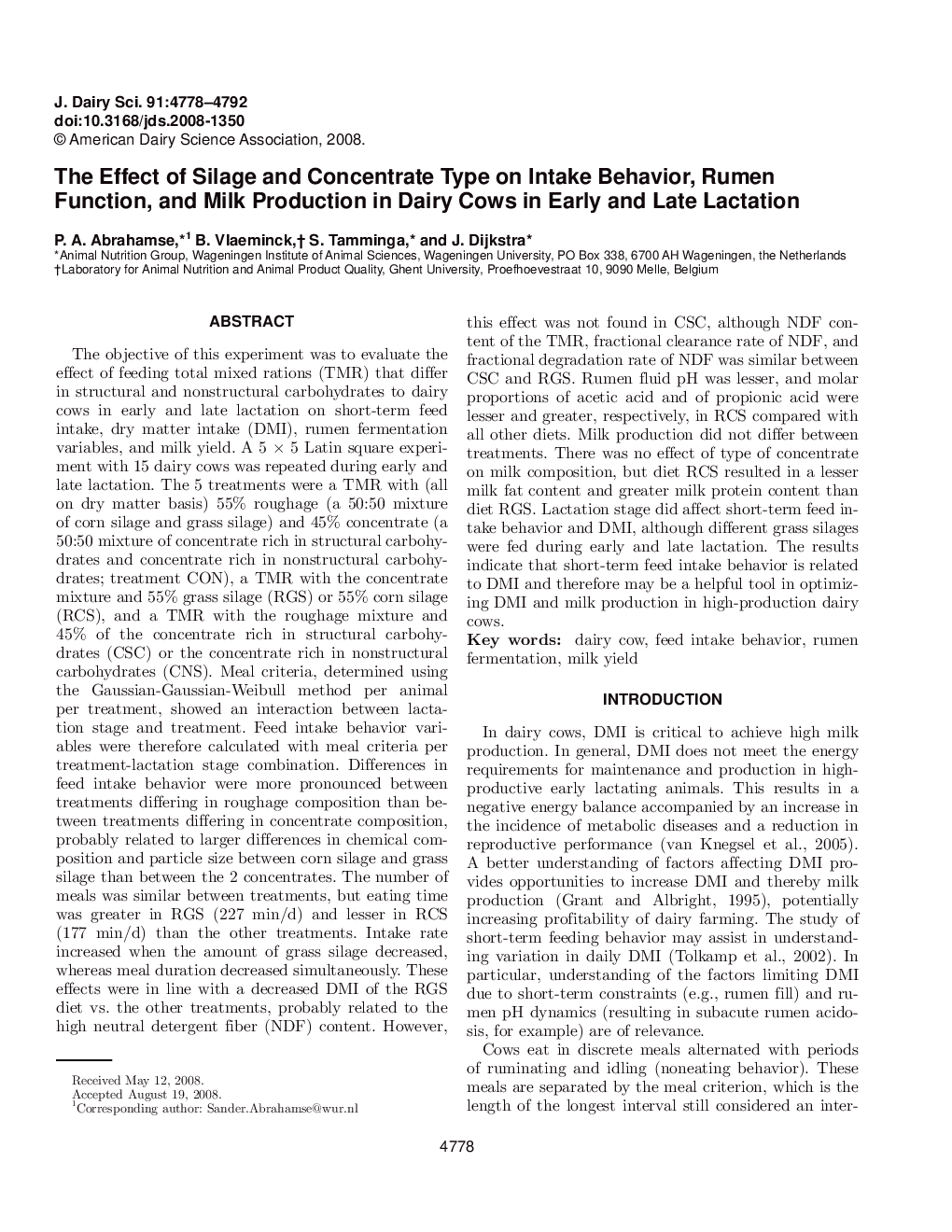| کد مقاله | کد نشریه | سال انتشار | مقاله انگلیسی | نسخه تمام متن |
|---|---|---|---|---|
| 2439814 | 1108105 | 2008 | 15 صفحه PDF | دانلود رایگان |

The objective of this experiment was to evaluate the effect of feeding total mixed rations (TMR) that differ in structural and nonstructural carbohydrates to dairy cows in early and late lactation on short-term feed intake, dry matter intake (DMI), rumen fermentation variables, and milk yield. A 5 × 5 Latin square experiment with 15 dairy cows was repeated during early and late lactation. The 5 treatments were a TMR with (all on dry matter basis) 55% roughage (a 50:50 mixture of corn silage and grass silage) and 45% concentrate (a 50:50 mixture of concentrate rich in structural carbohydrates and concentrate rich in nonstructural carbohydrates; treatment CON), a TMR with the concentrate mixture and 55% grass silage (RGS) or 55% corn silage (RCS), and a TMR with the roughage mixture and 45% of the concentrate rich in structural carbohydrates (CSC) or the concentrate rich in nonstructural carbohydrates (CNS). Meal criteria, determined using the Gaussian-Gaussian-Weibull method per animal per treatment, showed an interaction between lactation stage and treatment. Feed intake behavior variables were therefore calculated with meal criteria per treatment-lactation stage combination. Differences in feed intake behavior were more pronounced between treatments differing in roughage composition than between treatments differing in concentrate composition, probably related to larger differences in chemical composition and particle size between corn silage and grass silage than between the 2 concentrates. The number of meals was similar between treatments, but eating time was greater in RGS (227 min/d) and lesser in RCS (177 min/d) than the other treatments. Intake rate increased when the amount of grass silage decreased, whereas meal duration decreased simultaneously. These effects were in line with a decreased DMI of the RGS diet vs. the other treatments, probably related to the high neutral detergent fiber (NDF) content. However, this effect was not found in CSC, although NDF content of the TMR, fractional clearance rate of NDF, and fractional degradation rate of NDF was similar between CSC and RGS. Rumen fluid pH was lesser, and molar proportions of acetic acid and of propionic acid were lesser and greater, respectively, in RCS compared with all other diets. Milk production did not differ between treatments. There was no effect of type of concentrate on milk composition, but diet RCS resulted in a lesser milk fat content and greater milk protein content than diet RGS. Lactation stage did affect short-term feed intake behavior and DMI, although different grass silages were fed during early and late lactation. The results indicate that short-term feed intake behavior is related to DMI and therefore may be a helpful tool in optimizing DMI and milk production in high-production dairy cows.
Journal: Journal of Dairy Science - Volume 91, Issue 12, December 2008, Pages 4778–4792